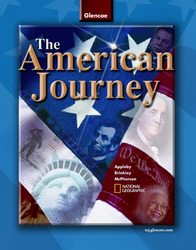
The American Journey © 2007Chapter 14: The Age of ReformChapter OverviewsIn the early 1800s a spirit of reform swept through America. The Second Great Awakening, a religious revival, inspired people to become involved in missionary work and social reform movements. The temperance movement warned of the dangers of alcoholic beverages. Horace Mann was a leader in education reform. By the 1850s most states began to move toward free, public education for most students, although African Americans had few opportunities to go to school. Other reformers focused on improving life for those with special needs. The abolitionist movement also grew in numbers and in strength during this time. William Lloyd Garrison and the Grimké sisters spoke out publicly against slavery. Although these and other white abolitionists drew public attention to the cause, African Americans themselves played a major role in antislavery efforts. Frederick Douglass was the most widely known African American abolitionist. Others took more direct action in leading enslaved people to freedom. The Underground Railroad helped runaway slaves from the South reach freedom and safety in the North. The most famous "conductor" on this train was Harriet Tubman. The right to vote was an important part of the women’s movement. A convention was held at Seneca Falls, New York, in 1848. There a call was made for an end to all laws that discriminated against women. Elizabeth Cady Stanton, Lucretia Mott, and Susan B. Anthony were famous leaders of the women’s movement. |  |















